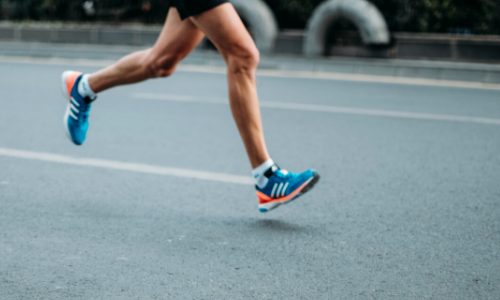
Patellofemoral pain syndrome, more commonly known as runner’s knee, happens when your kneecap (the patella) rubs against your thighbone (the femur), at the point where they attach.
It’s a common condition for people who:
- Run
- Swim
- Ride bikes
- Play basketball
- Play football
There are a number of reasons you might experience this type of pain, and the key to eliminating it is to figure out exactly what factors are causing the pain for you.
Runner’s Knee Causes
Overuse of the knee joint, whether from working out too strenuously or from ramping up an exercise program too quickly, is a frequent cause of runner’s knee. Your kneecap itself sits in a cushioned groove as it moves over the end of your femur. Muscles, ligaments, and tendons work together to guide this movement in a smooth manner, but if these tissues are overworked or haven’t had time to build up properly, your kneecap might move out of its groove. When that happens, the groove, which is made up of cartilage, can become inflamed or even damaged.
Even if you are careful to moderate your exercise, wearing shoes that fit poorly or working out with improper form can contribute to a case of runner’s knee. For example, overpronation, in which your foot rolls inward too much as you run, can lead to improper tracking of your kneecap in its groove. Tight hamstring muscles or a tight iliotibial band (a band of connective tissue that runs along the length of your leg) can pull the kneecap out of alignment. In addition, women are more likely than men to experience this disorder because women’s hip-to-knee angle tends to be greater than men’s. All these conditions add stress to the knee joint that can increase the likelihood of a tracking issue.
Symptoms of Runner’s Knee
Typical symptoms of runner’s knee include pain or aching in and around the knee, particularly in the front of the knee. Tenderness and swelling might accompany the pain. These symptoms can occur both during activity (especially when going uphill or downhill) and when getting up after sitting for a long period of time. You might also notice a clicking or catching sensation behind your kneecap. One or both knees can be affected.
How to Treat Runner’s Knee
Treatment for runner’s knee involves reducing inflammation and irritation in your knee cartilage. Consult with a professional orthopedic doctor, such as the experienced orthopedic specialist at Mark Miller MD in St. Louis. Dr. Mark Miller can examine your pain and develop an effective therapy regimen tailored to your individual needs.
Immediate options might include:
- Rest
- Icing
- Compression
- Stretching
- Anti-inflammatory medication
- Gradual return to activities
Ways to Prevent Runner’s Knee
The best way to avoid another painful bout of runner’s knee is prevention. Our knowledgeable orthopedic doctor can provide professional advice on:
- Strengthening exercises
- Training regimens
- Body mechanics
- Proper footwear
- Muscle balance
- Flexibility
- Prudent use of knee braces
Your optimal prevention strategy will depend on your specific situation, and your orthopedic specialist is your best ally in helping to manage your journey back to optimal physical condition.
St. Louis Orthopedic Doctor
For years, Mark Miller MD has been helping patients get back to doing the normal activities they love, without the dreadful pain. Contact us today for the best runner’s knee treatment and prevention methods!
